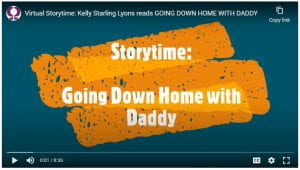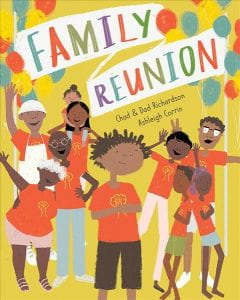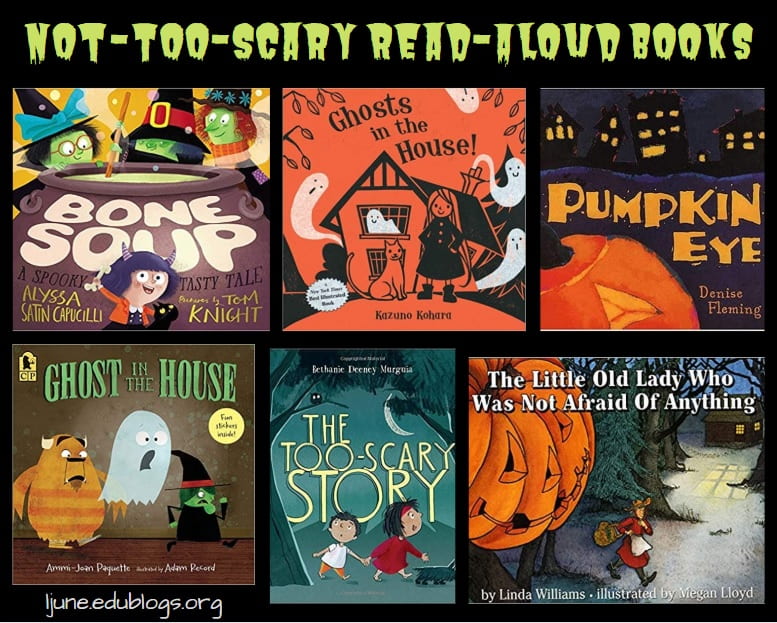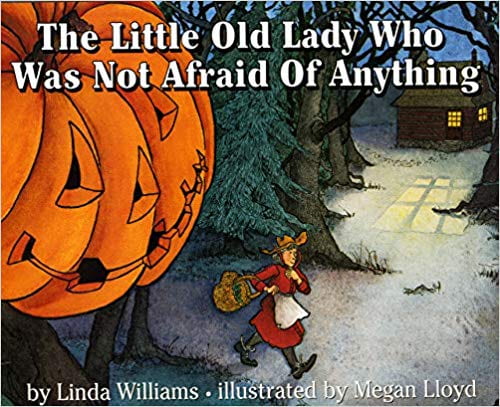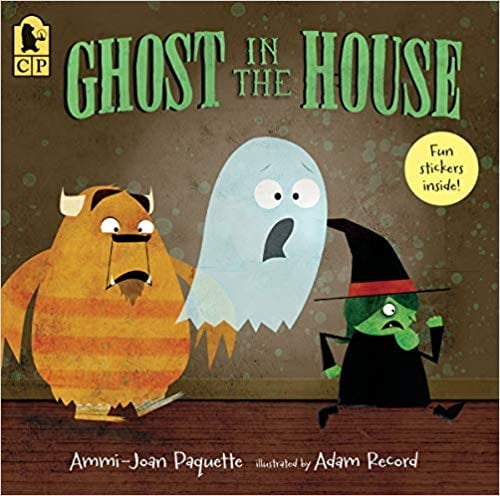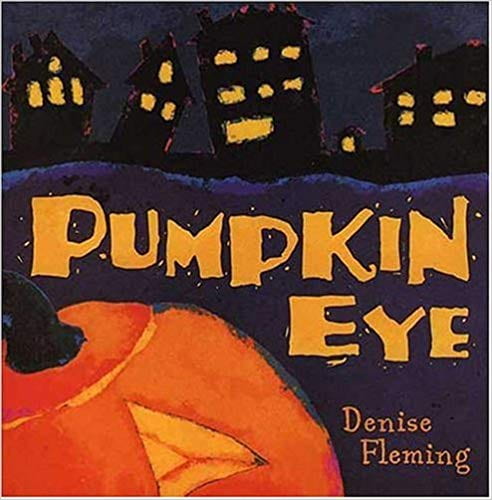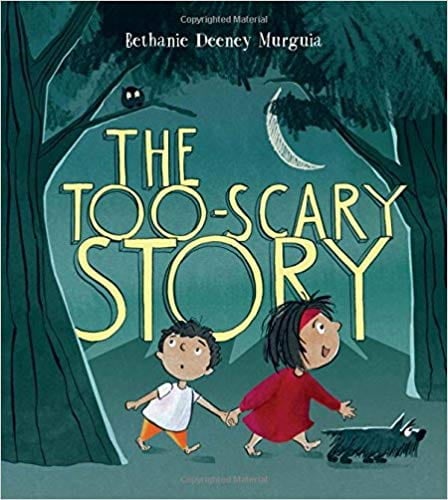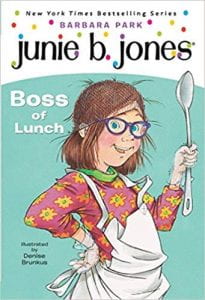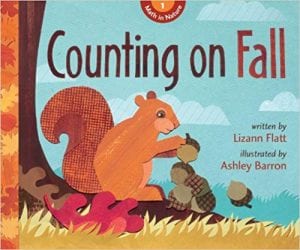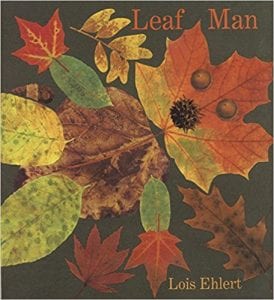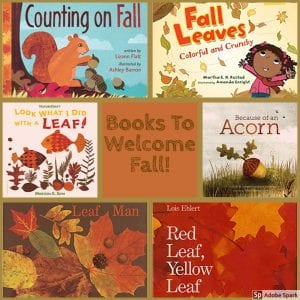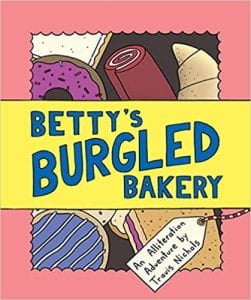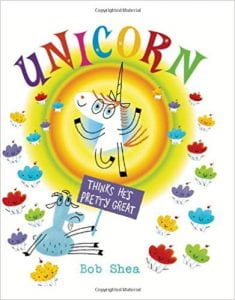School is out for the summer in most locations, but many teachers and librarians are still working with students in summer programs. I myself am involved in summer school within my district and have chosen a beach theme for my library. Hey, if I can’t enjoy the sand and sea for real, at least I can pretend! This means I’m looking for beach books to use in read-aloud sessions with my elementary students. In order to bridge the gap between humans and the ocean, I’m introducing the theme with the topic of mermaids!
I guess I myself am somewhat fascinated by the idea of mermaids, and since I loved to swim as a child (and still do!) my parents sometimes teasingly called me a mermaid. There’s a definite allure to the idea of diving underwater and exploring the wonders of the sea, and who better to serve as a guide than a mermaid? In my last large school library book order I purchased a few new mermaid books to go along with the ones we already have. Here’s a look at our Mermaid Collection and how I’m using these books with kids. Click the book title links to look inside each one. Click the author and illustrator links to go to their official webpages (or the closest thing I could find). For each book I’ve included a summary, my favorite things about the story, and some ideas and resources for extension activities. Note that some of the links in this post are affiliate links, so if you use the link and make a purchase I receive a small commission at no cost to you.
 Oona – written by Kelly DiPucchio, Illustrated by Raissa Figueroa
Oona – written by Kelly DiPucchio, Illustrated by Raissa Figueroa
Well this is officially the MOST ADORABLE mermaid I’ve ever seen, and these illustrations just made me want to buy all the books Figueroa has illustrated, as well as order some art from her Etsy shop! The hair, the stripy tail that is giving me subtle clownfish vibes, the expressions on her tiny face – it’s all just perfection. In fact, the whole color palette for this book sets the tone for underwater adventure as this determined mermaid and her otter sidekick embark on a quest to retrieve a shining crown resting in the deep, dark rift. The delightful twist after the recovery makes Oona’s tenacity all the more admirable, and provides a satisfying ending to the tale.
-
- Writing Prompt: How Would You Get a Crown? – students will explain (with writing, drawing, or both) their plan to retrieve the crown
- Wooden Spoon Mermaids – allow students to use simple craft supplies to create their own mermaids
- Whale Songs – Oona listens to the whale singing when she needs comforting during a frightening event. Students will listen to whale songs and learn about how these ocean giants communicate. I found a short video explaining whale communication and put it in a YouTube Whale Playlist with some other videos of actual whale sounds for kids to enjoy.
 The Mermaid – by Jan Brett
The Mermaid – by Jan Brett
I have been a fan of Jan Brett for over 30 years, and I’m always awed by the details she includes in her artwork and her knack for telling two stories at once by using the margins of her illustrations. This book is a clever retelling of the Goldilocks tale, influenced by a trip Brett took to Okinawa. Instead of bears, we have Papa (Otosan), Mama (Okasan), and Baby Octopus, and of course the intruder is an adventurous young mermaid named Kiniro who is traveling with her puffer fish friend. When reading this book to a large group, you really need to be able to show the images on a large screen using a document camera so the audience can appreciate all the small details, including just what type of hat Baby Octopus is wearing on his head and what is happening to the Octopus family while Kiniro explores their home. This is another book where a crown features prominently, and the ending here – just as it did in Oona – reveals the generous nature of our heroine.
-
- Inspiration for The Mermaid – Brett shares the factors that influenced her choices for the book
- Create a Crown – students will use card stock and craft supplies to design a wearable crown worthy of a mermaid king or queen
- Under the Sea Research – students will learn about some of the sea animals and seashells found in the illustrations of the story
- Sy the Giant Pacific Octopus – Brett modeled her octopus artwork on this octopus (in the video below) after having an “arms-on experience” at the aquarium
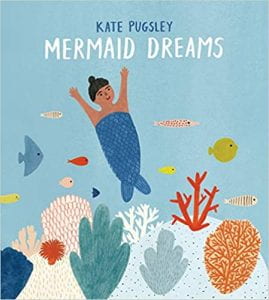 Mermaid Dreams – by Kate Pugsley
Mermaid Dreams – by Kate Pugsley
In this simple story, Maya goes to the beach with her parents but is too shy to join the other children playing in the sand. She falls asleep on her turtle float and dreams of the creatures below the waves, including a friendly mermaid. They explore together until Maya wakes up to a real girl inviting her to pretend to be mermaids together. The illustrations are childlike, and the endpapers totally remind me of an “I Spy” book.
-
- I Spy – create a list of items for kids to look for in the illustrations
- Stamping or Sponge Art – provide rubber stamps and ink, or sponge stamps (kids can even cut out their own) and paint for students to create their own undersea illustrations
- Greeting Cards – tell students that as an artist, Pugsley designs greeting cards to sell. Allow them to take their art a step further and design and stamp their own greeting card for someone.
 The Little Mermaid – by Jerry Pinkney
The Little Mermaid – by Jerry Pinkney
In this modern variation on the traditional tale of The Little Mermaid, Pinkney substitutes a friendship for a romance as Melody trades her voice to the Sea Witch for the opportunity to meet a girl who lives on land. The girls enjoy an adventure-filled day together before Melody is called back to family to save them from the Sea Witch. The author’s note amusingly explains that “while my research of the natural world was extensive, I used no live models for the mermaids.” This is a book best shared with a document camera if reading to a large group; otherwise students will miss many of the details of the illustrations, which beautifully change from cool blues below the ocean to vibrant yellows above the water. I also appreciate that this story includes mer-people of both sexes.
-
- Compare and Contrast – have students note similarities between this and the traditional tale (either a printed story or a movie version)
- Giving Up Your Voice – Zion tells Melody she should never give up her voice for anything. Discuss the deeper meaning of “your voice” and what it means for individuals today.
- Seashell Jewelry – the mer-people in this story wear beautiful seashell necklaces and bracelets. Allow students to create their own shell jewelry to wear.
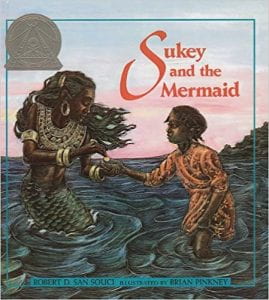 Sukey and the Mermaid – written by Robert San Souci, illustrated by Brian Pinkney
Sukey and the Mermaid – written by Robert San Souci, illustrated by Brian Pinkney
As a South Carolina resident, I’m partial to this Sea Islands folktale passed down from African American slaves and filled with Gullah dialect. Sukey toils hard at her chores under the watchful eye of her stepfather, until one day she meets spends a stolen afternoon on the beach and meets a mermaid – Mama Jo – near the shore. When Sukey worries aloud that she’ll be punished for wasting the afternoon, Mama Jo gives her a gold coin to appease her parents. Mama Jo continues to watch over Sukey until the young woman chooses to marry a good man, a final gift from her “mermaidy godmother.” The illustrations are done with Pinkney’s signature scratchboard technique.
-
- Gullah Culture – give students a taste of Gullah life with these resources from SCETV
- Scratchboard Art – allow students to create their own scratch art mermaid illustrations, either from scratch (no pun intended!) or using commercial scratch cards
- The Pinkneys – explain that Jerry Pinkney and Brian Pinkney are father and son who both create children’s picture books. Allow students to share interests they have in common with a parent or grandparent.
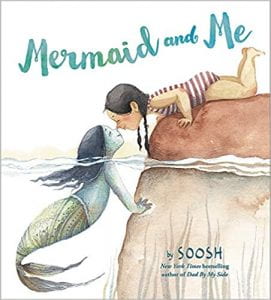 Mermaid and Me – by Soosh
Mermaid and Me – by Soosh
In what apparently started out as an Instagram challenge, Soosh created a series of mermaid watercolors that eventually became the illustrations for this book. In it, a girl who doesn’t fit in well at school is surprised to encounter a real-life mermaid (who looks more than a bit like her) who becomes her friend. The two take turns enabling one another to enjoy adventures underwater and on land, until the day Mermaid becomes tangled in an abandoned net. The ending provides an environmental plea as well as a message about friendship and inclusion, and the epilogue is a sweet glimpse into the future.
-
- Draw Your Mer-Person Twin – allow students to imagine what they would look like as a mer-person and then draw it on paper
- Coloring Pages – I usually prefer for kids to create original art rather than use printed coloring pages, but Soosh has provided some mermaid coloring sheets on her site
- Ghost Nets – provide some background on the dangers of discarded nets, and inspire students with the Ghost Net Exhibition at the Australian National Maritime Museum which includes the largest collection of ghost net art in the Southern Hemisphere.
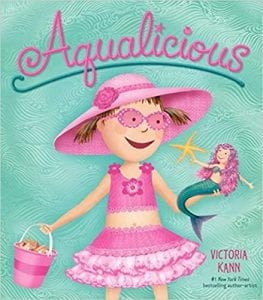 Aqualicious – by Victoria Kann
Aqualicious – by Victoria Kann
I’m always in favor of sharing series books with kids because it helps them with the sometimes difficult decision of what to read next. I also appreciate that for such a “girly” series, Kann includes the boys by giving Peter a role in the story. When Pinkalicious discovers a tiny mermaid named Aqua at the beach, she immediately gets excited about showing her new friend the human world, even when Aqua isn’t comfortable with some of the activities. When the brother and sister finally agree to take Aqua home, she reveals that she doesn’t live in the ocean at all. This story provides several opportunities to discuss the importance of listening to our friends and respecting their wishes.
-
- Aqualicious Curriculum Guide – provided by Victoria Kann
- Design a Castle for Aqua – using whatever building materials are on hand, students will design and construct a castle for Aqua, just like Pinkalicious and Peter built her a sand castle. (If no blocks, Legos, etc. are available, students can design a castle on paper.) Students will build it to scale so that it fits one of our our mini mermaid dolls.
- Mermaid Show Videos – students might be interested to know that there are mermaid shows in various locations similar to the one Aqua performs in. Here are clips from the show hosted at Ripley’s Aquarium.
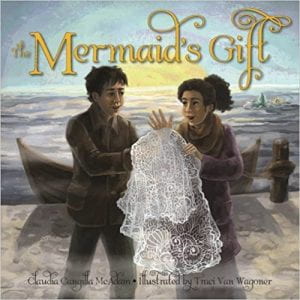 The Mermaid’s Gift – written by Claudia McAdam, illustrated by Traci Van Wagoner
The Mermaid’s Gift – written by Claudia McAdam, illustrated by Traci Van Wagoner
I’m sharing this book here because it does include a mermaid, but I believe it would fit better into a unit on Folk Tales and Legends better than it fits a summer beach theme. Watch the trailer and judge for yourself.
I’m working on a page of instructions, resources, and supplies for the Mermaid Extension Activities I’ve listed here if you’d like more information about those suggestions, and I’ll link to it when it’s ready. I hope you’ll also leave a comment to share your favorite mermaid books, crafts, and activities!





